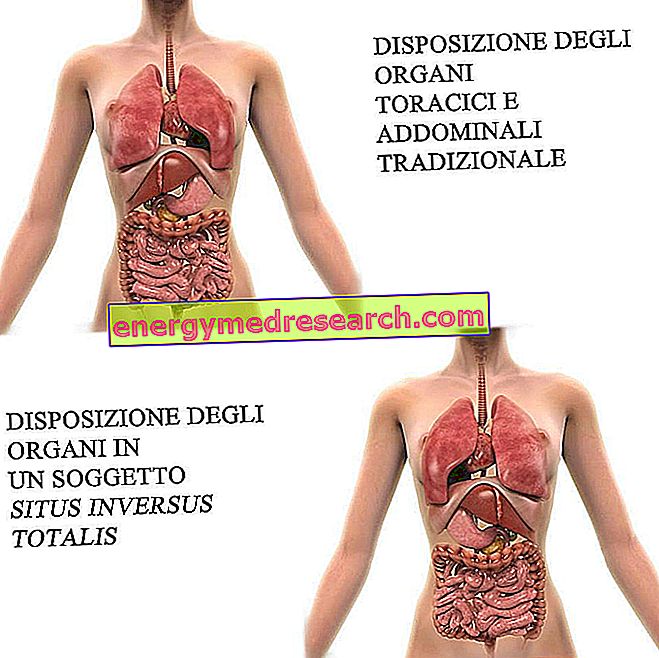
A very strange congenital condition, called situs inversus totalis, determines a trim of the thoracic and abdominal organs exactly opposite and specular to the traditional one.
Therefore, in those who are carriers of this anomaly, the heart is slightly to the right (instead of to the left), the lung with three lobes on the left (instead of the right) while the lung with two lobes on the right (instead of the left), the liver on the left, the stomach on the right, the first part of the colon on the left, the last part of the colon on the right, etc.
TO BETTER UNDERSTAND…
To better understand the orientation of the organs in an individual with situs inversus totalis, the reader is invited to consider the hands of the human body. These are the mirror image of each other, therefore, if you lean them on your chest or abdomen in the same way (for example with the ends of the opposing fingers and thumbs upwards), they can effectively represent a organ and its orientation, both in "normal" individuals and in individuals with situs inversus totalis .
The invitation to use hands derives from the fact that the thoracic and abdominal organs are asymmetric and the condition of situs inversus totalis is not only a displacement of the organs from left to right or vice versa.
Take the liver, for example. This is normally found on the right and can be represented with the right hand resting on the abdomen, just below the ribs. The palm of the hand is the major lobe of the liver, while the fingers are the minor lobe.
Now, if you want to know the exact disposition of the liver in the abdomen of a situs inversus totalis, just place your left hand just below the ribs of the left side of the body. As before, the palm constitutes the major lobe and the fingers the minor lobe.


